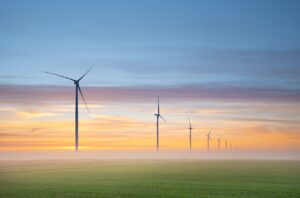The world of investment often mirrors the natural environment, with trends ebbing and flowing like the ocean tide. In recent times, wind energy investments have emerged, blowing fresh air into the sustainable investing scene. Harnessing the power of the wind, renewable energy companies are driving an investment revolution, generating a gale of opportunity for those attuned to the sustainable investing breeze.
Harnessing the Gale: Wind Energy Investments
The appeal of wind energy investments has grown stronger and more compelling over time. This is due to a combination of the environmental necessity, a more robust and competitive infrastructure, and the rising demand for sustainable energy sources. Moreover, there has been a noticeable shift in investor preferences, with more and more turning their attention towards sustainable investments.
As the winds of change have swept across the investing landscape, ETFs (Exchange Traded Funds) have been a significant part of this transformation. ETFs offer investors a lower-cost option to participate in this renewable energy revolution, particularly as the underlying expenses are generally lower.
Navigating the Wind Energy ETFs
Investors looking to leverage this surge in wind energy investments have several ETF options. Each comes with its unique advantages and varying exposure to the wind energy sector.
The First Trust Global Wind Energy ETF (FAN) offers a comprehensive portfolio predominantly invested in the wind energy industry, ranging from utilities to manufacturers of wind turbines.
The Invesco WilderHill Clean Energy ETF (PBW) provides a diversified exposure to clean energy sectors, with a substantial wind energy segment. It also offers a competitive expense ratio, making it attractive for cost-conscious investors.
The iShares Global Clean Energy ETF (ICLN) is known for its broad exposure to the renewable energy industry, including a sizable wind energy component. With its relatively low expense ratio, it is another viable option for investors wanting to participate in this growing sector.
The SPDR S&P Kensho Clean Power ETF (CNRG), with its focus on clean power, includes a significant portion of wind energy investments in its portfolio.
In addition to the investment potential these ETFs provide, they also come with various associated expenses. These include management fees and the potential for tracking errors, meaning that the fund’s performance may not perfectly match the performance of the underlying index it tracks.
It is crucial that investors, before making any investment decisions, consult a prospectus and their professional investment advisor. This will help them understand the potential risks and rewards associated with these investments.
Please see other articles DBF has written on this topic:
https://dbfwm.com/sustainable-retirement-investing-chicago/
https://dbfwm.com/sustainable-investing-a-guide-for-the-conscious-investor/

Charting a Sustainable Course
Sustainable investing is not just a passing trend; it’s a strong, transformative gust reshaping the financial landscape. As the world continues to grapple with environmental challenges, the importance of wind energy investments will only increase.
Investing in wind energy signifies an investment in the future – a future powered by clean, renewable sources. It’s a statement that profitability and sustainability can coexist, and in fact, thrive together.
Please remember, this article does not guarantee any investment returns and is meant for informational purposes only. Always consult a professional financial advisor before making any investment decisions.
Adam Faust, Principal
Deep Blue Financial LLC, Northbrook IL
Sources:
